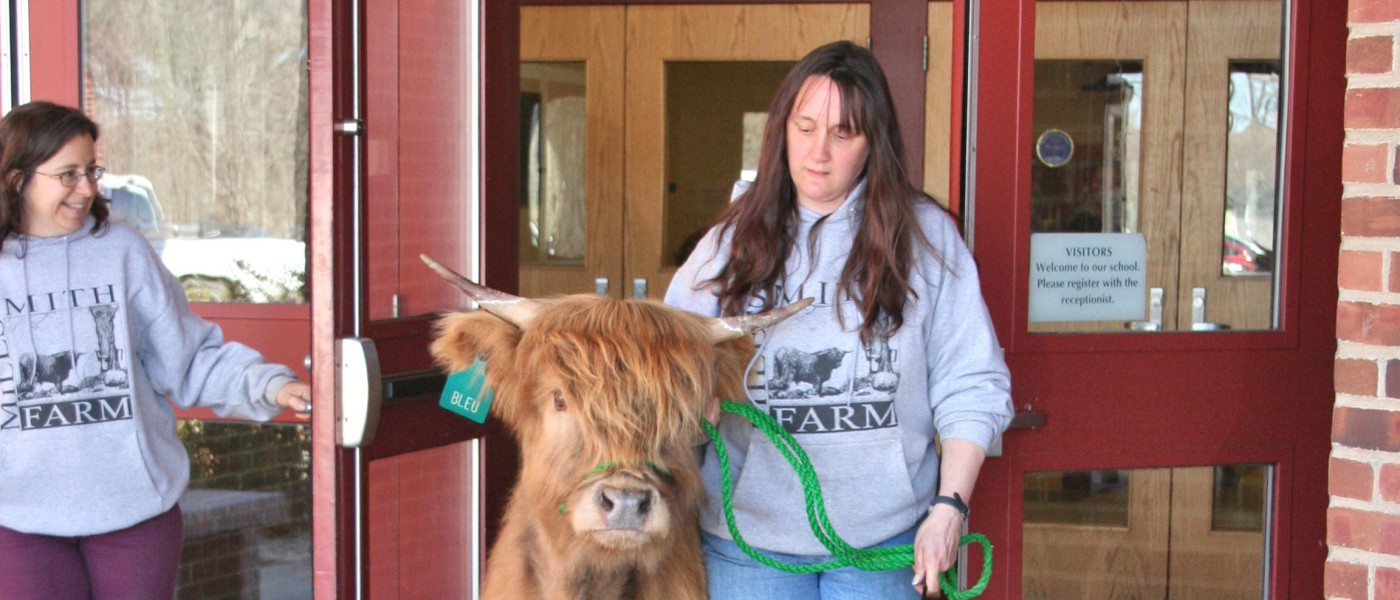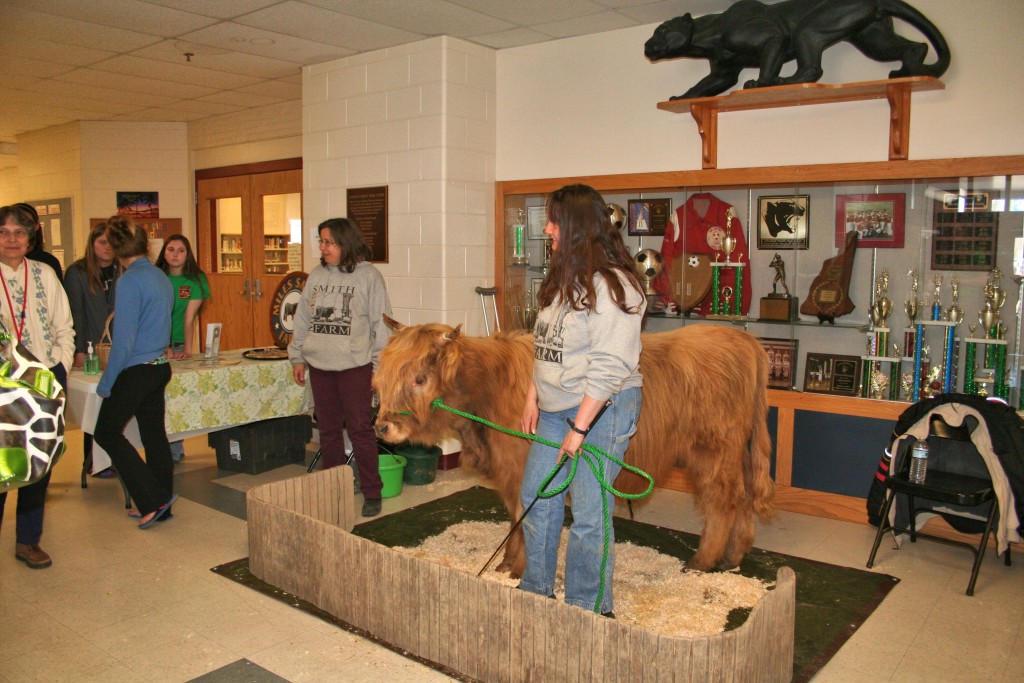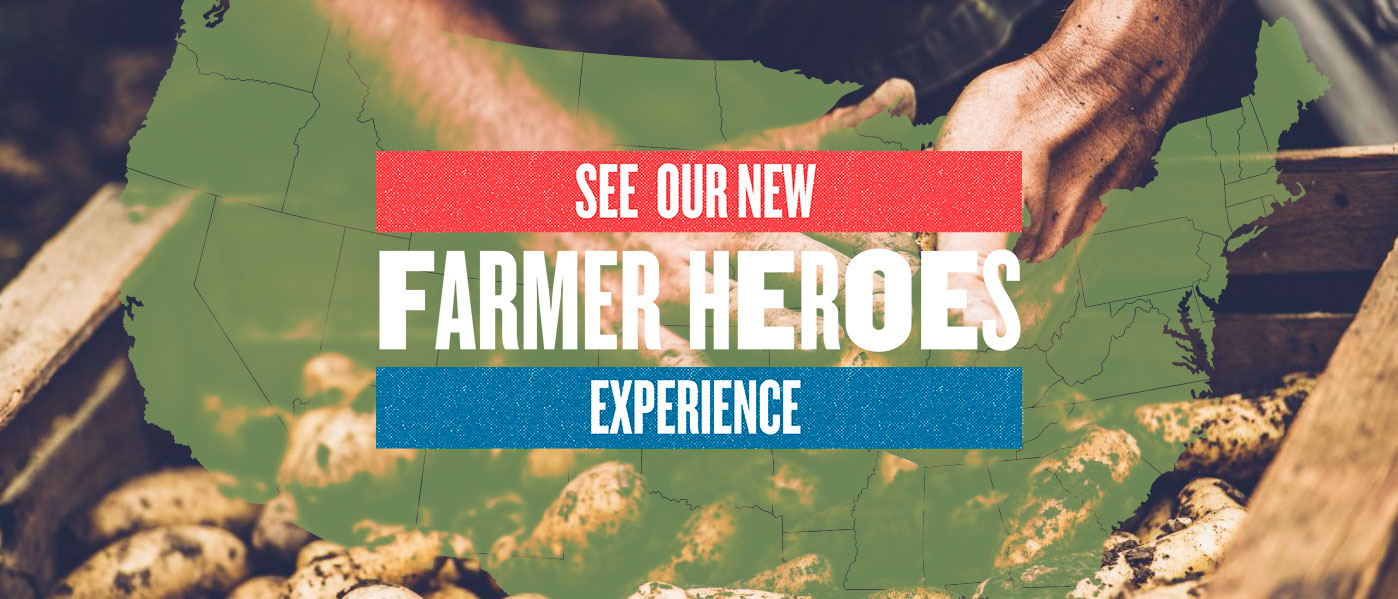You might think pizza and French fries are the main course in school cafeterias, but a number of dedicated schools and farms are working to make sure kids can access nutritious, locally sourced foods with their lunch money. Through farm to school programs, schools have the opportunity to purchase food grown and raised in their communities, putting options on the menu that invest in both their local economy and the health of the next generation.
Julie Moran, CEO and founder of the North Country Farmer’s Co-Op in Colebrook, New Hampshire, established the operation when her family moved from Massachusetts to New Hampshire in 2007. She kept thinking about small farms and sustainable agriculture, and just couldn’t shake the dream of playing a role in the growing local food movement.
“They trusted stuff from Argentina before they trusted stuff from us.”
“I couldn’t ignore it. Every time I’d meet farmers, they’d say, ‘It’s so competitive. There are so few customers in Colebrook,'” said Moran. She sympathized with those farmers who were lowering prices yet still losing sales, sometimes leaving farmers markets with just $100 in sales at the end of day. She knew those farmers needed another market.
That November, she organized the co-op, initially drawing in 12 farmers and expanding to assist 28 farmers today. The co-op has recruited customers within a 300-mile radius that includes hotels, restaurants, hospitals and schools, all seeking local products.
Despite the co-op’s wide ranging early success, providing good food along the lunch line has always presented obstacles.
“The food service directors wanted this. They really wanted local food, and they were pushing the school’s business manager to allow it,” said Moran. But there were some barriers to get over. Some officials in the school district feared that the local food would lack certain regulations that other food sources had passed. “They trusted stuff from Argentina before they trusted stuff from us.”
Then in 2009, the Upper Connecticut Valley Hospital, one of the co-op’s buyers, convinced the Colebrook schools that the local farm food was safe and would make student lunches better. The school began to place orders from local farmers through Moran, who maintained responsibility for negotiating prices, quality, and coordinating delivery.
But even 5 years later, barriers still keep much fresh, local food out of the cafeteria. School meals at Colebrook only cost $2.60, and feeding growing adolescents on such a low budget makes it easier for cafeterias to turn to processed foods than to fresh and local products. It’s a constant struggle between providing affordable options for families while also generating fair prices for working farmers.
I think there’s an awful lot we can do to make school lunches better,” said Moran. “If I didn’t think there was anything we could do, I wouldn’t be looking to find some kind of solution.”
Moran can find answers in other school systems in that state that have triumphed in their quest to incorporate local products. It takes compromise on the part of the school and the farmer, but fresh food can make it to the lunch table.
Carole Soule, owner of Miles Smith Farm in Loudon, New Hampshire, has sold her beef to a number of area schools.
Soule’s farm started began working with the Gilford School District and later sold to the Concord School District. At $4 a pound, Concord schools could afford her meat, but she was only bringing back 1 cent per pound as profit. Now, she has shifted to work with other area schools such as Oyster River Cooperative School District and Seabrook Elementary who modified their budgets to purchase the ground beef at $4.50 per pound. Her farm sells about 2,000 pounds of ground beef a month, with sales to schools bringing the farm between $15,000 and $18,000 a year.
“Our margin is pretty small on $4.50 per pound, but we feel it’s important to get local food, local beef into the schools,” said Soule. “It isn’t insignificant in that volume. It does help us even though it’s a lower percentage.”
Soule also works to raise awareness at local schools. She has participated in health fairs at Seabrook Elementary to educate students and parents about the benefits of eating locally. She tours New Hampshire schools, even bringing a cow through the doors of Pittsfield Elementary once, to engage students in an active learning experience with local agriculture.
“Those kids are going to be eating local meat in our school district and they’re going to want local meat when they come out of the school, too. We’re hoping that that will translate to change in their overall eating habits,” said Soule. “The schools are what it’s all about. If we don’t feed our kids well, why bother with anything else?” said Soule.
For the Oyster River Cooperative School District in Durham, New Hampshire, the program works well because the town was willing to make the investment. A few years ago, the voters there cast their ballots to allocate $14,000 for local food in schools. Even though that initial money has been spent, food service director Doris Demers can still purchase local products thanks to community support and adjustments made to the school budget.
“The community support is just unbelievable here,” said Demers, who has worked in food service for 20 years. With a family farming background and passion for local food, she had tried for years to bring local food into schools but faced various challenges. “It’s frustrating to see how many children don’t even know where our food comes from. They have no connection with food. They don’t understand how to grow it or how good it is when it’s fresh,” she said. “Finally, the dream is becoming a reality.”
Demers took the job in 2002, the same year Oyster River schools started to receive funds for buying local. She worked hard to make connections with local farms that could provide her with quality yet affordable meat and produce. She spent the last of her $14,000 on the very last day of school and was awarded another $15,000 from the community to continue the program.
Now, that $15,000 is written into her budget. Demers still has to find ways to pay for the rest, but that support helps her to provide good food and improve lunch menus.
“That was such a huge vote of confidence,” she said. Over the 12 years the school has sourced local food, the number of students purchasing has risen 40 percent in one of the schools and by significant amounts in the others. “It takes a long time to change a culture and the culture here was you bring your lunch from home. This kind of change doesn’t happen overnight.”
While the project hasn’t always been easy, Demers thinks it’s worth the effort on all fronts.
“You can’t do it alone. It really does take a village,” she said. “The community has to work together.”
In Colebrook, Julie Moran continues to apply for grants to help the co-op bring more farm fresh food into school cafeterias. She’s hoping to get $15,000 to hire a farm to school director and another $10,000 to cover the escalating delivery costs to get the food from farm to school. As committed as she is to providing good food for schools, she can’t make it happen without the help of the school and an increase in finances allotted to the food programs. Moran, who started her co-op to help small farmers, finds herself at a crossroads, between putting produce on lunch trays and cash in farmers’ pockets.
“We’re going to do everything in our power to make it work. We don’t care how long it takes. We hope it’s sooner rather than later, because kids grow up fast,” said Moran.
Further Reading
- To learn more, visit the websites of the North Country Farmer’s Co-Op and Miles Smith Farm.
- For some ideas and resources for getting farm to school programs started, see our October 2014 blog post.
- To find food from family farmers in your area, check out our Find Good Food page.




